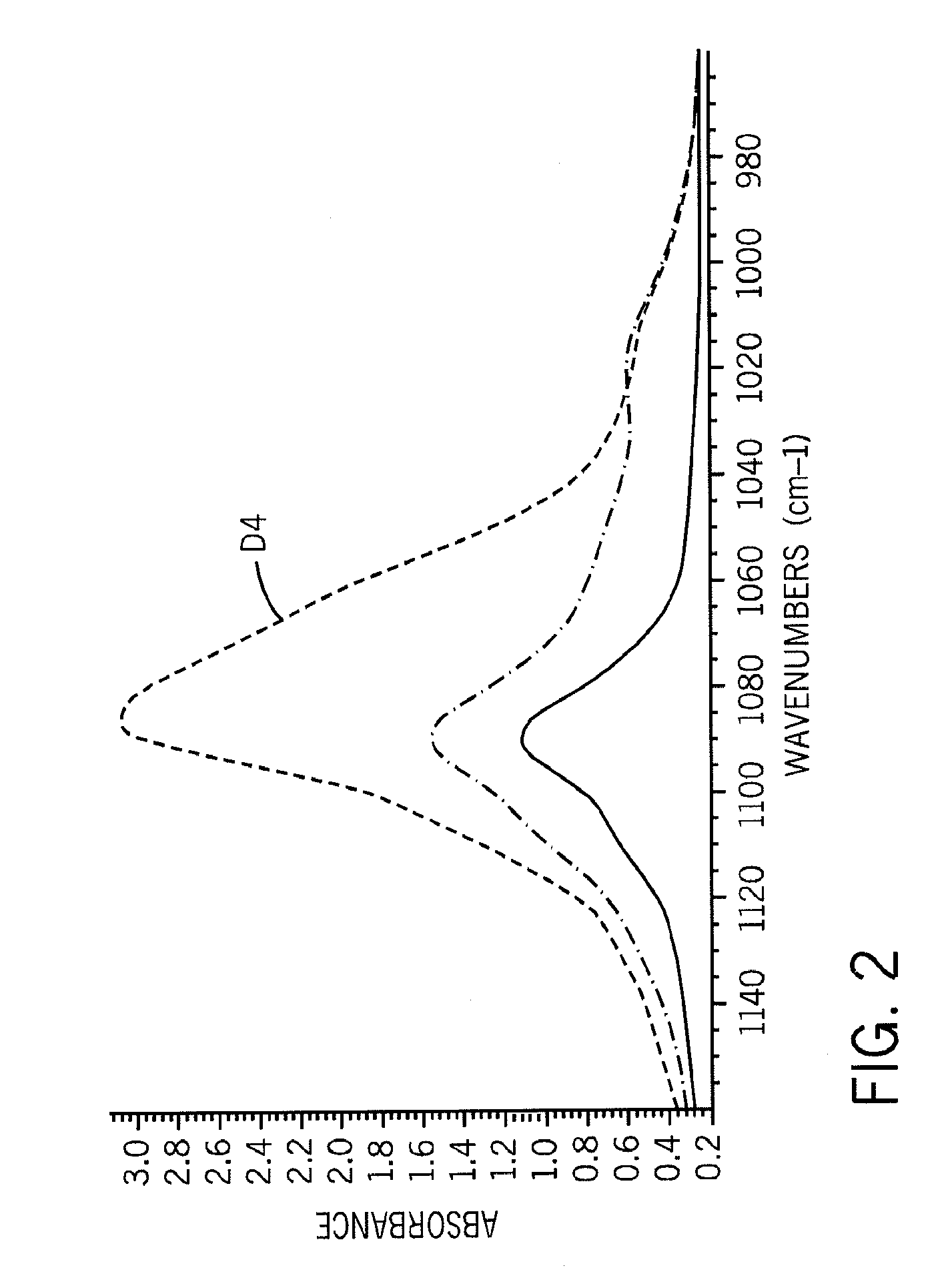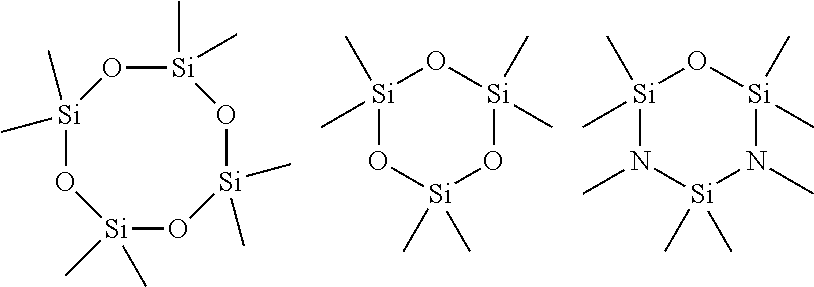Silicone-thermoplastic polymer reactive blends and copolymer products
a technology of thermoplastic polymer and reactive blend, which is applied in the field of thermoplastic polymer reactive blends and copolymer products, can solve the problems of slow reaction rate and limited present process for making such reactive blends, and achieve the effect of increasing the range of applications, performance and/or cost advantages
- Summary
- Abstract
- Description
- Claims
- Application Information
AI Technical Summary
Benefits of technology
Problems solved by technology
Method used
Image
Examples
specific embodiments
[0075]The extent of octamethylcyclotetrasiloxane (D4) polymerization can be followed using FTIR Spectroscopy. As can be seen from the following examples and FIG. 1, D4 (top plot) exhibits a single peak at approximately 1075 cm−1. The onset of polymerization is initially marked by the appearance of a small shoulder at the right side of the D4 peak (bottom plot). As polymerization progresses, the small shoulder increases at the expense of the single D4 peak. This continues until two peaks, of approximately equal magnitude, are apparent at 1010 cm−1 and 1095 cm−1. This signals the formation of a PDMS chain.
[0076]Two Brabender mixer reactions are performed to examine the feasibility of using the ring-opening / polymerization of D4 as a means of forming PDMS / Polyolefin-graft-copolymers. In one sample an ethylene-octene copolymer with a density of 0.87 g / cm3, a melt index of 5 (measured according to ASTM D1238), and available from The Dow Chemical Company is grafted with VTMS (about 1.5 per...
PUM
| Property | Measurement | Unit |
|---|---|---|
| weight percent | aaaaa | aaaaa |
| density | aaaaa | aaaaa |
| density | aaaaa | aaaaa |
Abstract
Description
Claims
Application Information
 Login to View More
Login to View More - R&D
- Intellectual Property
- Life Sciences
- Materials
- Tech Scout
- Unparalleled Data Quality
- Higher Quality Content
- 60% Fewer Hallucinations
Browse by: Latest US Patents, China's latest patents, Technical Efficacy Thesaurus, Application Domain, Technology Topic, Popular Technical Reports.
© 2025 PatSnap. All rights reserved.Legal|Privacy policy|Modern Slavery Act Transparency Statement|Sitemap|About US| Contact US: help@patsnap.com



